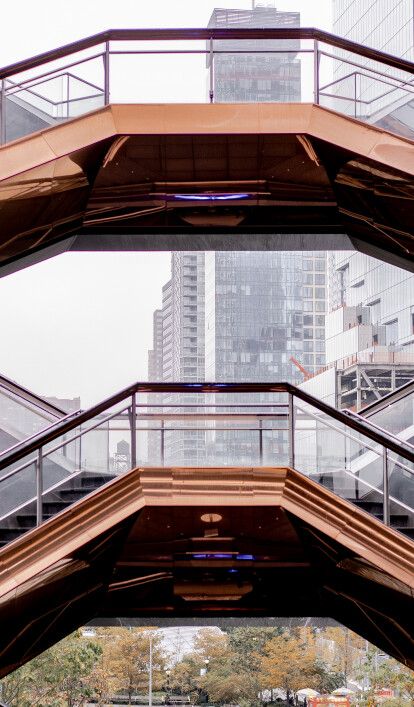Copper applications in the construction market

The construction market is considered receptive to new materials, materials and technological processes, especially those that can speed up the execution of certain works and reduce construction errors.
Copper in construction, as it is referred to, has many applications, but usually unnoticed from the point of view of the end user. It is worth getting to know them a little more closely.

Features of copper - a desirable material with many advantages
Architectural applications of copper result in a straight line from its technical properties, including durability, ease of mechanical processing and susceptibility to molding by other methods. Corrosion resistance is also not insignificant. Frequent contact with high and low temperatures and high humidity are unsurvivable conditions for many raw materials. Most copper alloys are fully resistant to them.
Copper structures in architecture
Finished architectural elements made of copper require a marginal amount of maintenance, and are not considered too difficult to use properly. The antimicrobial properties of copper are also worth noting. These are due to the fact that the external structure of this metal provides extremely unfavorable conditions for the existence of bacteria, viruses and fungi, resulting in the slowing down of their development or complete restriction. This advantage is particularly important in touch surfaces.
How is copper used in the construction industry? The most common architectural applications
The various copper alloys have many architectural applications, resulting mainly from the excellent mechanical properties of this raw material.
- Architectural elements - copper is used very often as roofing, including for the finishing of domes and spires. The coverings are resistant to various environmental factors, and many types of finishes make it possible to adapt them to the style of a particular building.
- Pipe installations - the excellent mechanical properties of copper greatly expand the number of applications of this raw material to installations. Pipes made just from it perform well in water, central heating, DHW, gas, solar and fire installations, even in sprinklers. Copper is considered by installers as a better alternative to standard plastics, mainly due to its high durability and wide range of available models, as well as the high pressure achievable inside.
- Embellishments - copper elements can also serve as additions and embellishments, in cases where standard stainless steel is not the optimal choice, either from the point of view of durability or style. An interesting example of the use of copper is La Vila Olimpica, where it was used as a raw material for a monstrous fish-shaped work. Another example is the Vasa Museum, where the entire 12,000-square-meter roof was just made of copper - because of this, it weighs more than 100 tons in total.
- Interior industry - practically every copper alloy differs in something - if not in mechanical properties, then in style, thanks to which it will also find application in interiors. Copper is used to produce innovative wall tiles, externalized plumbing pipes in loft/industrial style, small ornaments, stands, lamps and sculptures. The distinctive brownish color is increasingly encountered in interiors due to its unconventionality.
- E-mobility - the growing share of electric vehicles in motoring can be seen not only on the streets, but also in construction machinery, which is increasingly powered by electricity. In any electric car, the amount of copper is many times greater than in combustion cars, mainly due to its excellent electrical conductivity. Copper is used for coils, inverters and battery and inverter

What copper solutions does the Electris brand offer?
Pure copper has excellent mechanical properties, but sometimes alloys prove better. A variety of copper products are available from Electris, including busbars, brackets and profiles, rail brackets, spacer modules, connectors, studs, heat sinks and a variety of copper tube and rod components.



